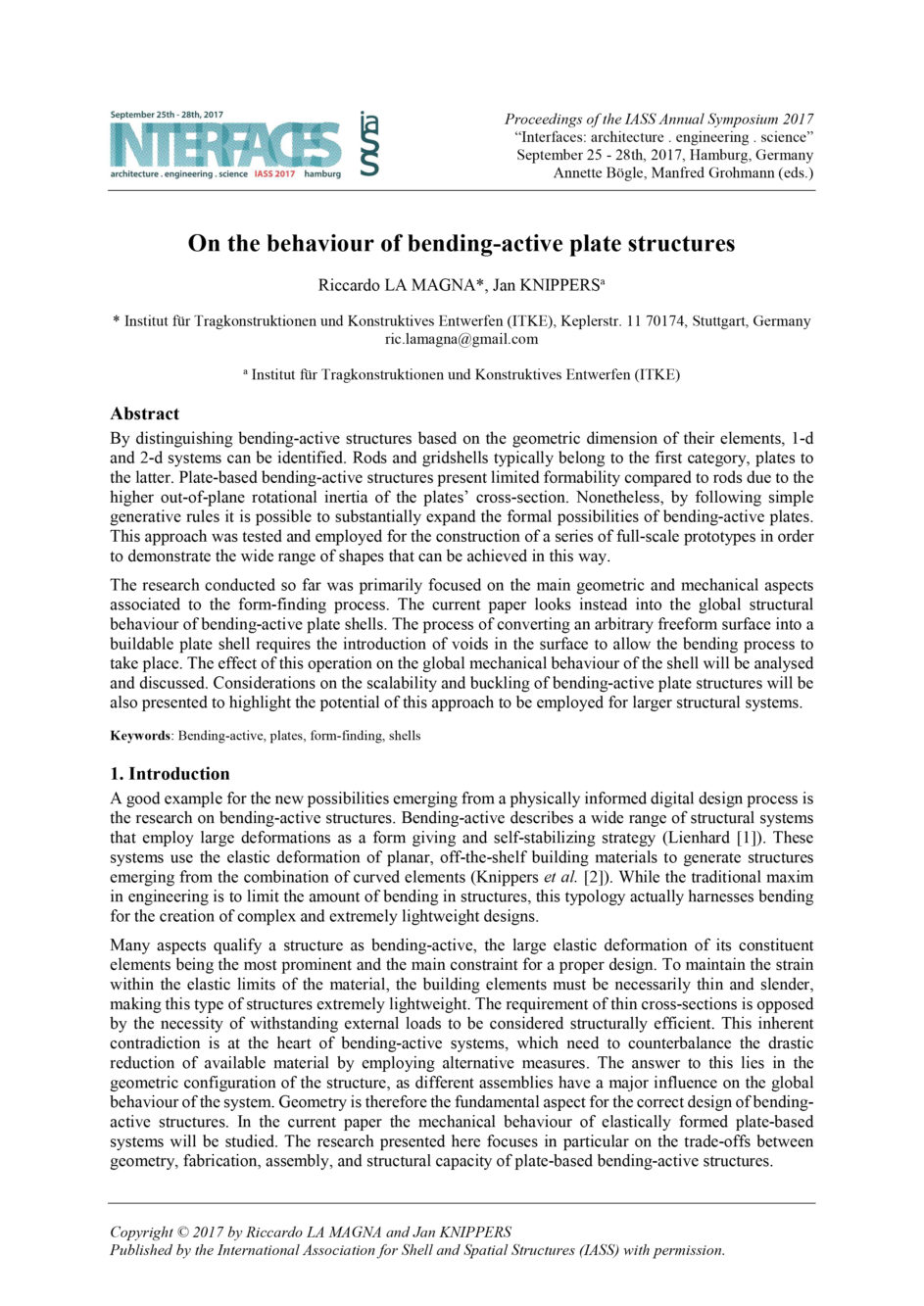On the behaviour of bending-active plate structures – Conference Proceeding
2017
La Magna R., Knippers J.
On the behaviour of bending-active plate
structures.
IASS 2017: Interfaces: architecture .
engineering . science, Hamburg, 2017
By distinguishing bending-active structures based on the geometric dimension of their elements, 1-d and 2-d systems can be identified. Rods and gridshells typically belong to the first category, plates to the latter. Plate-based bending-active structures present limited formability compared to rods due to the higher out-of-plane rotational inertia of the plates’ cross-section. Nonetheless, by following simple generative rules it is possible to substantially expand the formal possibilities of bending-active plates. This approach was tested and employed for the construction of a series of full-scale prototypes in order to demonstrate the wide range of shapes that can be achieved in this way.
The research conducted so far was primarily focused on the main geometric and mechanical aspects associated to the form-finding process. The current paper looks instead into the global structural behaviour of bending-active plate shells. The process of converting an arbitrary freeform surface into a buildable plate shell requires the introduction of voids in the surface to allow the bending process to take place. The effect of this operation on the global mechanical behaviour of the shell will be analysed and discussed. Considerations on the scalability and buckling of bending-active plate structures will be also presented to highlight the potential of this approach to be employed for larger structural systems.
